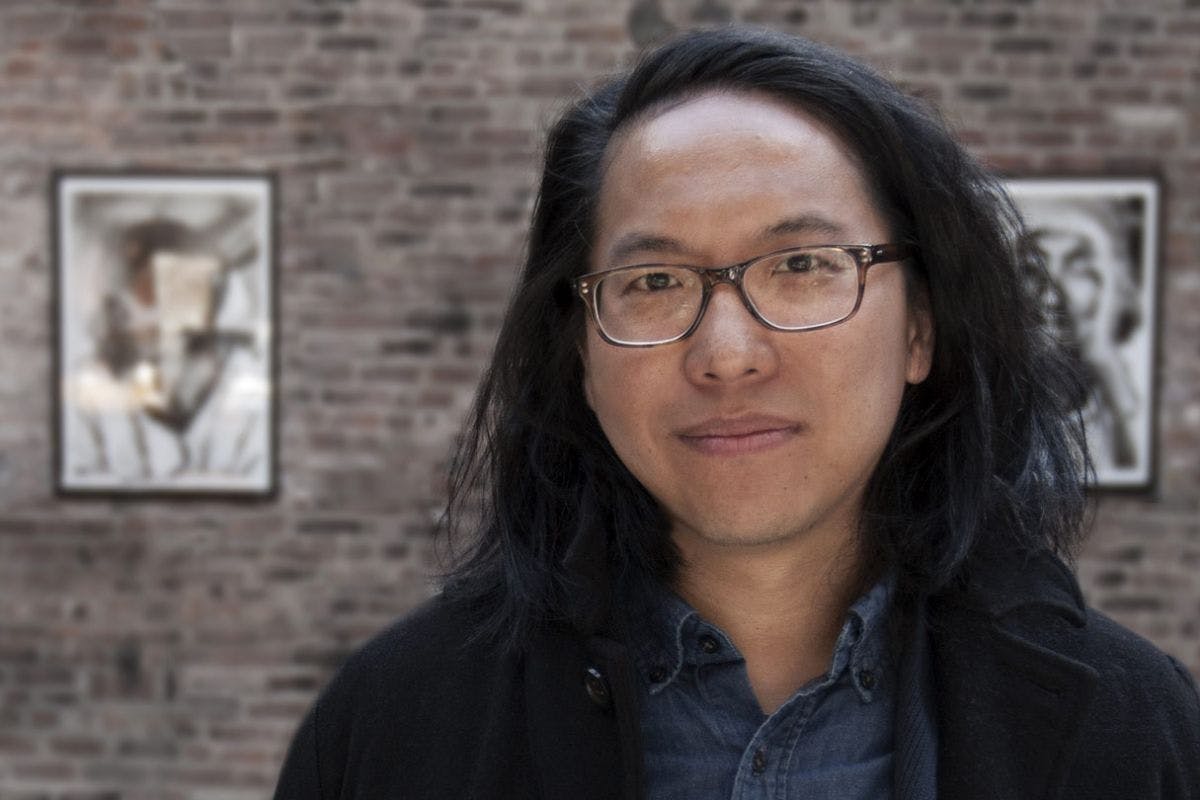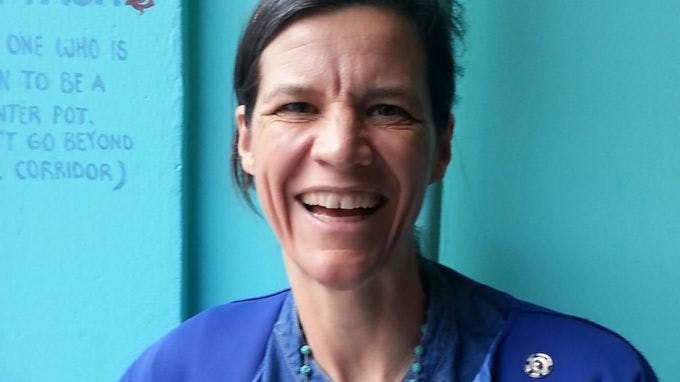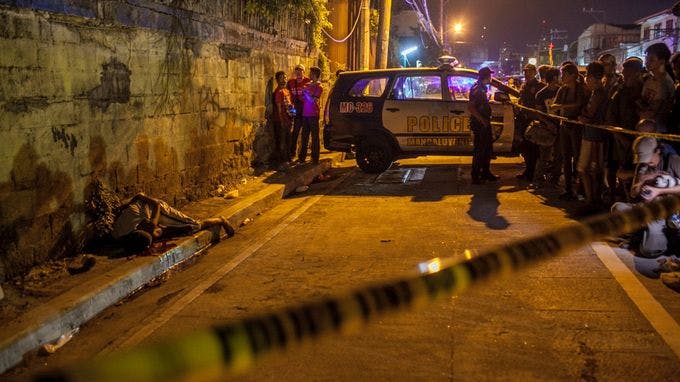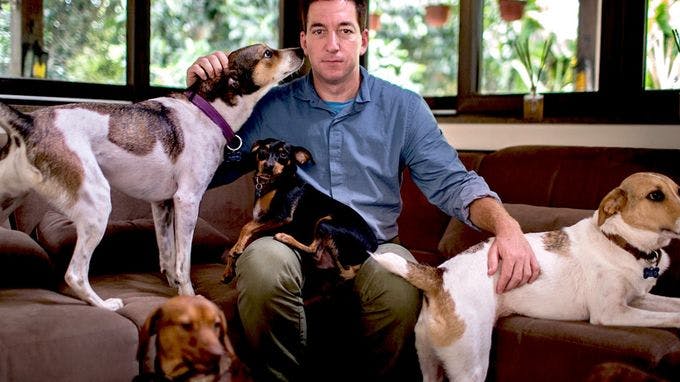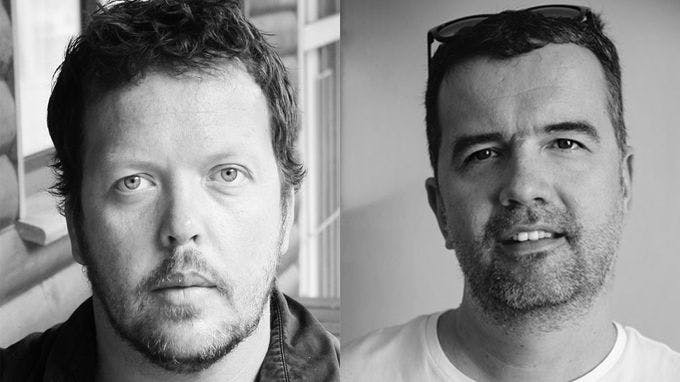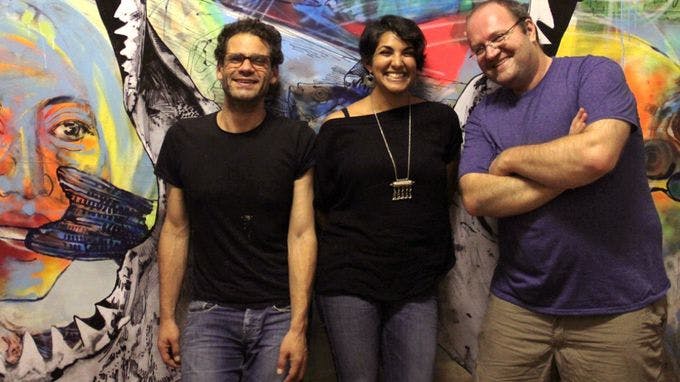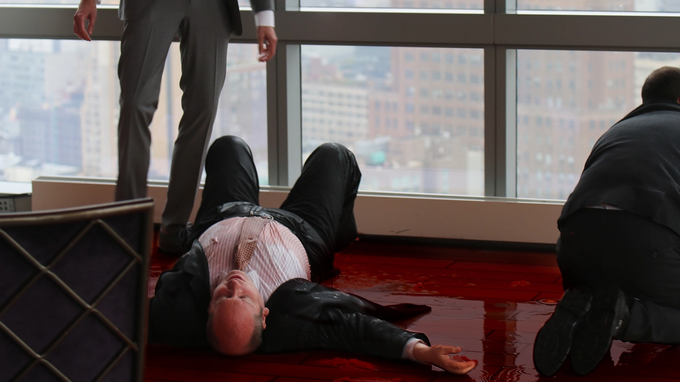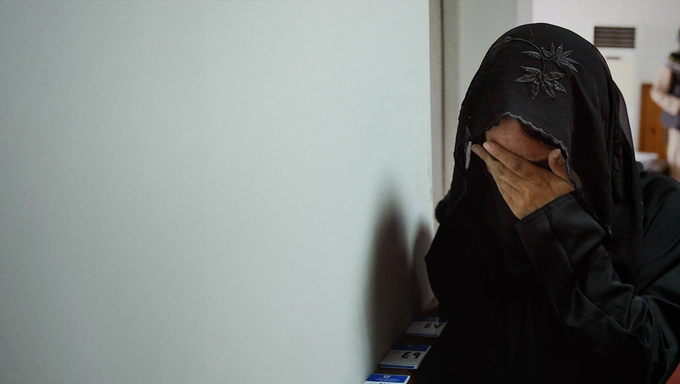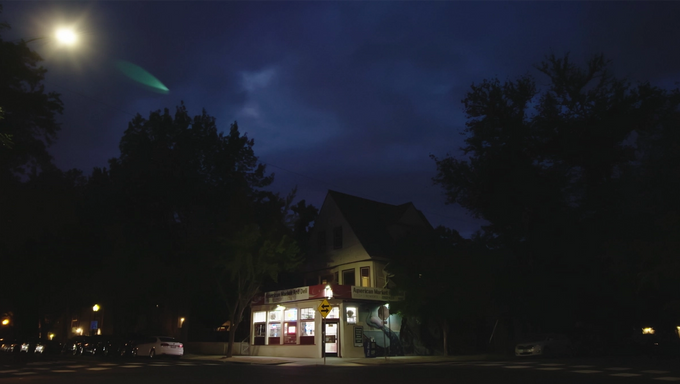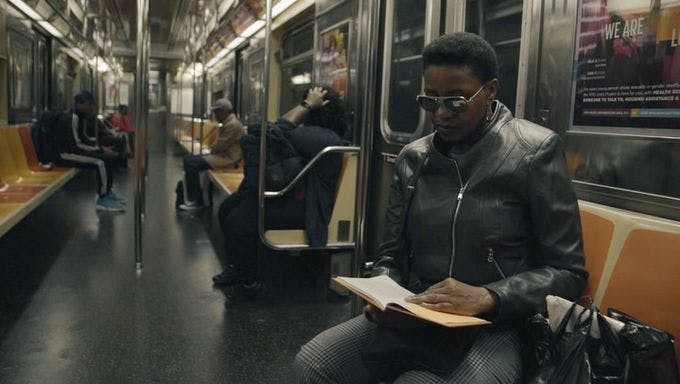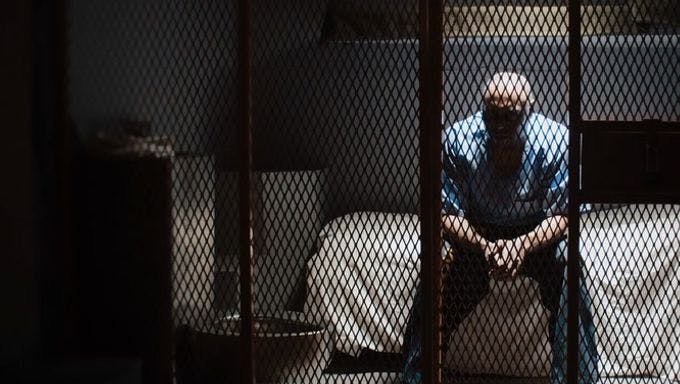Regardless of whether he’s working in a long or short form, filmmaker Stephen Maing digs in. For his 2012 feature High Tech, Low Life, Maing spent five years trailing two dissident citizen journalists as they reported on censored news throughout mainland China. Subsequent projects saw him tracking the failed mayoral campaign of Christine Quinn in New York City, where the director is based, and exploring the highly charged issues of race and NYPD policing.
According to Maing, it was his work on High Tech, Low Life that led him to collaborate with Laura Poitras and Peter Maass at The Intercept, yielding the short film The Surrender, which debuted on the site in February 2015. The film was released in tandem with Maass’s written investigation “Destroyed by the Espionage Act”; both tackle the story of Stephen Kim, a U.S. State Department expert who was prosecuted and eventually imprisoned for allegedly revealing classified information to a reporter.
As Maing describes in the following interview, he and Maass made trips to Kim’s home in Virginia right up until the morning Kim checked himself into a Maryland prison. With The Release, the filmmaker continues Kim’s saga by documenting his departure from prison 13 months later, finding a man struggling to process what he’s been through and repair his shattered life.
To what degree did your reporting overlap or work in conjunction with Peter Maass’s investigation?
Maing: It’s always nice to be able to compare notes and impressions, and we would walk away with very similar questions as our understanding of Stephen’s story evolved. It was really tense in the beginning because Stephen was quite worried about potential retaliation by the Department of Justice for possibly saying the wrong thing, or coming off as though he was refuting the terms of the plea agreement that he ultimately made. It was a complicated situation, so it was meaningful to be down there with Peter.
How did you make sure that you each got what you needed?
Maing: The two mediums can have very different needs, such as the balance between observation and interview. We would stagger our trips so Stephen Kim could develop a relationship to the camera that was independent of the print reporting.
And we knew there were things we both needed to be present for, which were informing the trajectory of our reporting. The challenge would be trying to show what was going on with him and what he was going through — as opposed to straight telling. A lot of time was spent sitting and talking with Stephen in the kitchen, but a lot of amazing and interesting information would emerge from that — even if the majority of that would actually not be usable for me. It was valuable to be able to establish an independent relationship where I could start to become more of a fly on the wall in his life.
There’s a visual and auditory aspect to what you’re doing, decisions about look and feel that you’re making as a filmmaker that were distinct from what Peter was doing — though he’s got his own set of choices in terms of form. And even between your two films here, you’re making different choices. How did you come to make those choices, and how did they relate to your understanding of Stephen’s experience?
Maing: I went in knowing very little about what to shoot and how to document Stephen. There were so many questions and points of confusion about what happened to him and what to look for when we first walked through that door. But over time, I grew to understand what he was going through in this situation and in his life. The whole range of emotions he was going through started to inform what I looked for, so by the midpoint of shooting the first part, it was really apparent what kinds of scenes we could get out of this information dump that he was giving us.
In passing conversation, he would mention what it feels like to walk through the supermarket and be totally anonymous going through this thing that is destroying his life, the alienation and the suicidal thoughts he was having. And so immediately there was this thought of — if we can, I would like to film him in the supermarket. Weeks later, he mentions that he’ll have a job to go to when he’s released from prison, which would make him eligible for early release. And so that was another situation I could ask to be present for. Just by the nature of this process of long-form filmmaking, the more time we spend with people, the more we understand how to document what they’re going through.
I love that you’re talking about strategies of long-form filmmaking even though this is a short film. This kind of approach still took an investment of time and the development of a relationship to shape it into the story you wanted to tell. It wasn’t the five years you spent on your feature, but it was showing up and listening, building trust.
Maing: I’m always amazed by the process of long-form filmmaking, even if it is for a short film. For this piece, Stephen really was a slow burn. It took a long time to acclimate him to the idea of being documented — even though in some ways, he was desperate to get his story out. The nice thing about the long days and months spent making long-form docs is that as Stephen acclimated to the camera, I think it also became an open — sometimes even cathartic — space for him to begin to unpack and express some of his feelings. Whenever we have the opportunity to really dig in and establish a relationship with a subject, the sense of what to look for becomes more acute. I don’t think that it would have been possible to just go down for five or six days and do this piece. It was around 25 days of filming, and it was important to spend that kind of time.
What was it like to film with him again after he’d been in prison? He seems changed, and the second film you made with him is different as well.
Maing: It felt really great to see him, to see that he hadn’t lost his sense of humor and was still able to talk with perspective. But I was also really moved, and kind of blow away that he had gone through that whole experience and was now living in the basement of an old couple’s house — they’d generously allowed him to stay while he gets his life together.
There’s a getting-into-his-point-of-view element that’s really interesting here, both in a contemplative visual approach and the interpolated, emotionally accumulating voiceover. They’re such strong aesthetic choices, and they’re a departure from the choices you made in the first film. How did you come upon that?
Maing: Unlike Part 1, Part 2 was able to unfold without this contextual burden of establishing what had happened to him, what the circumstances were. Presumably, people arriving at this second part already got a strong sense that this was an individual who had been very harshly prosecuted under the Espionage Act, considering that he didn’t engage in any kind of wartime spying activity for which the Espionage Act was initially designed.
Instead, we had the luxury to really live inside his mind and get into some of the details of what it was like to get through prison. He told us he kept a daily journal of everything that happened to him, and received a tremendous number of letters and cards from people who had followed his case and were generally worried about him. As he went through this writing and correspondence for the first time since leaving prison, it immediately took him back. I could hear it in his voice — there would be these long pauses between one page and the next, or from one card to the next. I didn’t know what the structure of the second part would be until I saw him handling these cards and letters, and it’s quite a gift to a filmmaker when a subject is triggered by something so powerful.
To what degree does Stephen’s specific story represent larger issues of government overreach and the quashing of critical discourse?
Maing: I think it’s very much about power and legitimacy. Stephen Kim is among the growing list of mid-level government employees like Thomas Drake, Jeffrey Sterling, and Chelsea Manning targeted by the Espionage Act for challenging the government. We see how vulnerable individuals become when an administration’s policy or messaging is threatened.
Stephen Kim happened to have serious national security concerns about our policy toward North Korea, but he didn’t have the political clout to protect himself. It’s crazy to see how others with deep connections like Gen. Petraeus have gotten off so lightly considering the magnitude of his national security violations. Or how relatively unscathed Hillary Clinton has been despite her blithe mishandling of classified information. So I do think Stephen Kim’s story is a direct reminder of larger issues at play. It’s a reminder that we exist in a governed society that may resemble the idea of a democracy with rule of law — until you cross the line.
How do you balance tackling those larger issues and forces with honoring the specifics and complications of your subject? Is it something largely navigated in the editing, or was it present whenever you spent time with or spoke to Stephen?
Maing: It’s very hard for me to imagine going through what he has — to become radioactive to almost everyone you know and thought of as a criminal. I thought a lot about how to mitigate this presumption of guilt that simply came with the Espionage Act charges he fought. It didn’t help that circumstantially Stephen seemed to have made some mistakes, most notably in trusting James Rosen. But being guilty of a serious felony and being accountable for perhaps a significant lapse in judgment are two radically different things.
To neutralize this presumption of guilt, it was important to humanize Stephen’s story. And instead of making a film that attempted to re-litigate his case and innocence to viewers, I thought it would be important to give a window into his personality and world view, and raise larger questions about the extreme nature of the Espionage Act charges. Being a short film, it was also more realistic and powerful if we could try to just activate some of those questions: Why are some convicted and others aren’t under the Espionage Act? Was Stephen’s prosecution meant to correct a great breach of national security or maybe just to send a message about the consequences when government officials choose to speak to the press?
We started by talking about how you moved from your feature on Chinese journalists to this American domestic narrative. Looking back, how much overlap do you see between the two?
Maing: High Tech, Low Life was about the risks of speaking truth to power — these two scrappy citizen journalists pushing up against a powerful censorship apparatus that targets individuals and media alike. The guys in the film would talk about how in China, political legitimacy for the government was very much about social control and squashing competing narratives. So, it’s unfortunate to say, there probably are some parallels to be drawn.
But for me, this project was about trying to get at something more intimate. There’s a line by James Baldwin that I think Stephen once quoted that goes, “People are trapped in history, and history is trapped in them.” For me, that perfectly captures the power of visual journalism to help us unpack both what is sublime and immensely personal about history and struggle. To think, after all he accomplished as a young immigrant to this country, a gifted student of history and literature, and one of our rising stars in the intelligence community, that he would ultimately choose to go back to South Korea and leave this place he once loved and sought to protect. The takeaway is maybe that it’s not just Stephen’s story — it’s our history too.
Related:
